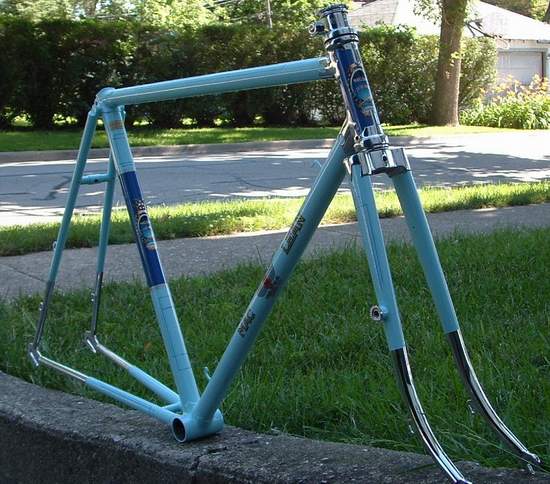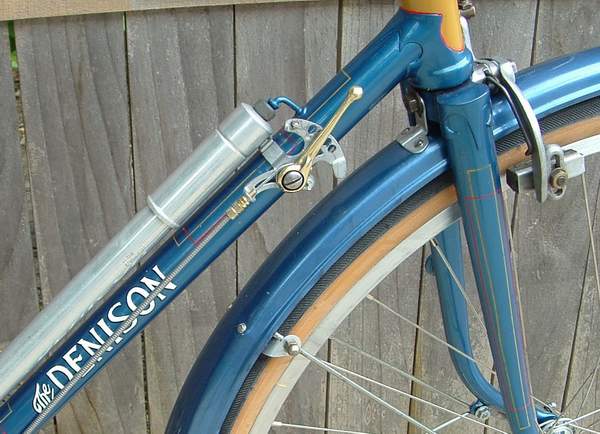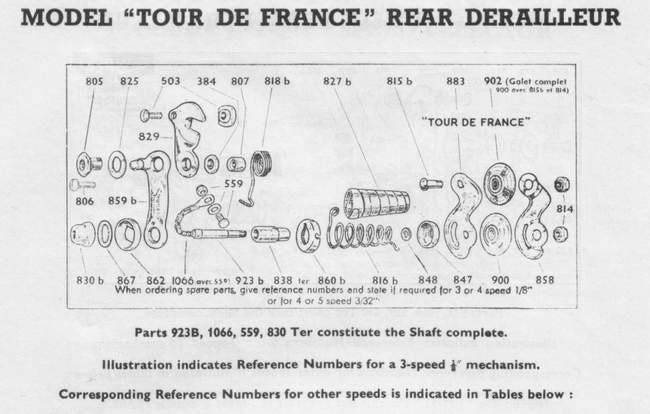How to Paint a Bicycle Frame
Posted: Monday 21st September 2020
Unless there is a burning desire to paint it yourself, the equipment cost needed to effect an acceptable finish, not to mention a level of skill, should deter all but a wealthy masochist. Remember, a professional painter can charge because he has the skill and equipment, which he can amortise over many jobs.
Let us start with the equipment:
A fair job can be done with an aerosol spray, but I would restrict the aerosol to the primer application, where it is satisfactory. So, the first item would be a 3 HP minimum air compressor to work off domestic current.
The necessary air hose and quick release fittings, a pressure regulator and water trap. The supplies would include several lint-free rags, filters for transfer of paint to paint cup. Automotive paint, preferably a pint, or a quart if you are sloppy, of acrylic enamel, a half gallon of paint reducer (thinners) to match, wooden paint stirrers, a tack rag, various grits of sandpaper (2 sheets dry 120 grit, 2 sheets each wet or dry in 220,360 and 600 grits) a quart of paint stripper (the gel type), throw-away brushes for this, a small scraper, a 4″ wire brush for use with hand drill, safety goggles, rubber gloves (not latex) industrial but thin, a 8″ X 10″ sheet of 3M scouring pad in medium and coarse, bottle of muriatic acid, a can of 2-part epoxy body filler, a tube of “lacquer putty” (for fine spot filling). If you wish to do the picking out of lug, a paint pen with a fine tip works very well; a can of superfine rubbing compound.
Now for the preparation:
The frame and fork must be completely stripped of all fittings and washed down with a turpentine or similar solvent to remove all grease. Clean inside the bottom bracket, head tube and seat tube. Use a tooth brush.
Dry with rags. DO YOU HAVE NEW TRANSFERS? Now is the time to carefully trace them AND photograph with a ruler alongside for location and size. Take the frame and fork outside with old newspapers to lay down to collect the old paint. Don the rubber gloves and safety glasses. Wear an old long-sleeved shirt. Use a cheap brush to paint stripper to the whole frame and fork. It can be put aside for an hour or so. Remove the first layer with a scraper. Re-apply another coat of stripper and leave for an hour; this coat should be heavier than the first. Again, an hour or two wait is needed. After scraping the loose paint, take the wire brush in the drill. YOU MUST WEAR PROTECTIVE GOGGLES. Beware of flying steel bristles. But this method seems to be the best for cleaning paint from around the lugs, etc. When almost clean, sand everywhere with the dry 120 grit paper.
Clean steel is a beautiful sight! Are you having any chrome plating done? This is the time to decide. If not, the frame and fork should be scrubbed with a 3M coarse and a solution of muriatic acid and water, about 30% acid; must wear rubber gloves and safety glasses. Keep all the surfaces wetted for about 5 mins. Then dry with lint free rag. It should have a brownish cast. All the dents can now be filled. Deep ones should use the 2-part epoxy in thin build up stages. Each application to dry before next coat, Sand down with dry 120 grit until flush. The lacquer putty is for filling primed surfaces.

Get ready for paint:
A 12″ long threaded rod with suitable nuts and washers, large enough to cover the bottom bracket apertures. It should extend 4″ either side of the bottom bracket when fitted. A similar arrangement should be attached through the head tube. These are handles for moving freshly painted frames. Also provide suitable hanging locations for wire hangers to locate the frame at a height where all surfaces to be painted can be seen. The seat tube can have a rolled thick paper tube pushed in with about four inches exposed. After the frame is positioned, wipe down with a reducer wetted lint free cloth. Allow to dry, then a tack rag to remove any dust.
Take the can of primer and shake for 2-3 mins. Continue to shake when between sprays. The paint can should be held at least 6″ from frame and always keep the paint can in motion to prevent runs. The first coat should be fogged on, starting in the most difficult locations, i.e. inside the junction of seat tube and seat stays, then bottom bracket area. Do not be concerned at lack of coverage. Spray remainder of frame with fog coat. Do fork by holding steerer tube and rotating. Wait for 4-5 Mins. And apply second coat, this time a little fuller following the same area pattern. Bursts can be used in the confined areas, but along tubes, start painting by holding the nozzle open at start and immediately a sweeping motion down the tube, releasing the nozzle at end of stroke. Wait for 5 mins. Check for missed areas and runs. Any areas can be filled with the lacquer putty. Wait for putty to dry before adding paint to thin areas after sanding runs gently with 120 grit dry. The third and final coat should be applied full in the same sequence after drying.
Allow to dry for at least an hour, or if convenient, overnight. Look for any runs or non-smooth areas over filled areas. Correct these areas with 220 grit. The rest of the frame can be smoothed with 3M scouring pad lightly applied (all we want to do is smooth the primer).
Applying the colour:
Lay out old newspapers on bench. Place filter in loop. Open paint can and remove lid. Stir paint thoroughly with wooden stirrer. Replace can lid but leave lid slightly open at a point away from label description. Put paint sprayer container below the cone-shaped filter in the fixture. Pour the paint into the filter and stop when the paint level rises to a quarter full in the paint sprayer container. Close the paint lid with hammer.
Add the reducer through the filter until about halfway up the sprayer container. Stir the container until mixed. Have a vertical test panel available to test spray pattern. Place container into gun. The adjustments on the gun are; two knurled knobs at rear, upper one adjusts air flow, in for reduced, the other for trigger movement, again, in for reduced trigger action. Another control is the nozzle. Two wings which are vertical can be made horizontal by loosening the knurled ring and rotating the wings to a horizontal position. Retighten the lock ring. Test the spray at a low air and short trigger and adjust to suit, along with the nozzle pattern. Wet down the floor area you will be painting in to keep down the dust. Keep wet until finished. The first coat should be a fogging coat, so set that way for first application. Apply the paint in the same sequence and using the same application technique as you did the primer application. Don’t worry about the thinness of the coat. After 4-5 mins a second fuller coat should be applied. Open the air flow slightly along with the trigger movement.

Bursts can be used in the tight areas. Allow 4-5 mins to dry. The final coat should be reduced to 25% paint 75% reducer. Empty container, pour a small amount of reducer in and swill around to clean. Pour out. Wipe inside with lint free cloth. Open paint can removing lid. Stir with fresh stirrer. Replace lid with a gap in the same location. Use new filter and pour in about 1½”; fill with reducer to 4″ level and stir.
This will flow freer than previous coats, so test spray first. Adjust if needed. The final coat can now be applied. Let dry for a couple of days minimum.
Posted: Monday 21st September 2020
This article appears in the following categories.
Upcoming Events
Whether you are looking for a gentle social meet up, or a 100-mile ride browse the community’s upcoming events and plan your next weekend outing.
